With both the home and the workplace seemingly powered by alternating current (AC), the question has been asked throughout the electrical industry,Has direct current (DC) really gone the way of the old Ford Model T?
Quite the contrary, direct current is alive and well. In this article we will look at the origins of AC and DC power and see how the two differ.
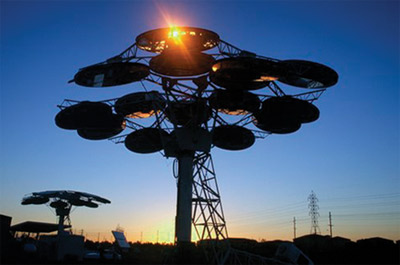
Photo 1. The Arizona sun provides plenty of power for these Concentrated Solar Power systems (CSP), also known as Concentrated Solar Thermal systems (CST) that dot the landscape at the APS Star Center in Tempe, Arizona. Using the light from this concentrated solar, heat is created to drive a steam engine that is coupled to an electric generator to produce power.
We will see how AC became the king of transmission and how DC, which many thought had met its demise, actually became the king of the appliance and equipment world; and how, while unknown to many, both types are used equally for the most part and have become close partners, sharing an almost symbiotic relationship with each other.
We will look at the popularity and impact of on-site generation methods, available through several sources, that are predominantly DC, causing some to ask, Is the new generation of DC advocates making another run at AC?
Finally, we will dispel a myth that DC is new, only vaguely mentioned and not fully addressed in the NEC, and that DC has taken a backseat to AC.
Current Mindsets
Scarcely a thought is given by the consumer to types of power, where power comes from, and whether or not there is a sustainable supply or source — that is the power company’s problem, isn’t it? Add to this the fast pace of our lives that controls our time and seems to accelerate every year, and this lack of attention is understandable.

Photo 2. Hydro power has been around for many years, and has been used to capture the energy from one of nature’s most powerful forces, water. Similar to producing steam and coupling it to an electrical generator, water is diverted to turn massive impellers that are coupled to electric generators to produce electricity.
Unfortunately, as long as the lights are on, the heating and air conditioning work, and the equipment operates, life is good in the mind of the average consumer — whatever the levels of power consumption. Questions are only rarely asked and usually only when there is a power outage; once the lights come back on, it’s business as usual.
With all of the electronics and electrically powered equipment that now occupy homes, offices, hospitals, and manufacturing facilities, to name a few, it’s a wonder that we can maintain a supply of electricity, in any form, to meet such a demand.
When one thinks of what it takes to supply our current demands, it is simply a miracle of science, engineering, construction and, yes, infrastructure. For those readers who haven’t had the opportunity to drive over the new Hoover Dam bypass and to experience the might of engineering, construction, and cooperation from the states of Arizona and Nevada to secure their source and supply of electrical generation, or to see the Grand Coulee Dam that is six times wider than the Hoover Dam and spans the Columbia River in Washington, generating 6.5 million kilowatts compared to the 2 million that Hoover Dam produces, this author strongly encourages everyone to see what America can do when we set our mind to it.
Origins
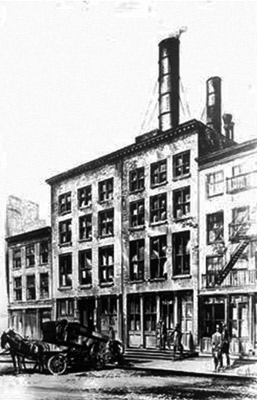
Photo 3. The Pearl Street power plant was the first plant to produce commercially sold DC power to the surrounding cities.
So were the dreams and visions of an earlier pioneer in the electrical industry, one Thomas Alva Edison. During a time when candles or the light from a wood fire, whether indoors or out, was the prevalent source of illumination for the home and the workplace, this young pioneer longed not only to find a solution to poor light sources and manual labor, but to find a way to use the new DC power source called electricity to enhance our lives forever and to put to bed the old ways.
He struggled for many years, patenting invention after invention. The many ideas that came from these struggles, although unknown at the time, helped to build the first power plant that was able to supply commercially available power to the public for a fee in 1882.
Even after the advent of commercially available DC power, debates ensued — over philosophies, capability of generation, and the need to provide power to a hungry nation in its infancy yet at the height of the industrial revolution. All of these topics on the table for discussion led to questions: Which type of power would ultimately be the most efficient? Which would be mostcost effective to generate?Which would be easiest to transmit to consumers?andWhich would provide the most longevity?The debate, while addressing all of the aforementioned items, was centered predominantly on transmission. Many of the supporters of the DC movement looked at keeping things simple, “If all of the electrical devices that are currently in use run on DC” — including the most popular of the era, the incandescent bulb — “why change now?” was the popular sentiment.
At the time, no one could have possibly known the impact that the enormous need for electricity would have on the infrastructure that supplied it. This would soon become evident as many manufacturers rushed to develop, build and market their products that were powered by this new plentiful source of power called electricity; and, yes, at this time period it was DC.
Transition
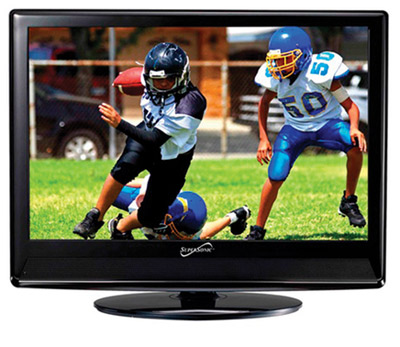
Photo 4. DC appliances have come a long way — look at this 19” LED 12-volt DC television. These new appliances can run directly off of the new on-site generating power systems that are currently available without the need for an inverter.
The supporters on the AC side, with research led by noted pioneers Nikola Tesla, Charles Steinmetz and others, expressed concern over the transmission capability of DC and over the reality that this new medium (electricity) was in high demand and would need to travel over long distances to meet those demands.
During the end of the 19th century, AC became the preferred source of power for power companies because of its ease of transmission, its ease of delivery to customers, and its convertibility to DC for use by the many existing appliances. So the question is always asked,Well, what happened to Thomas Edison and DC?The answer is quite simply, nothing.
By the time the debate over the ease and ability of transmission of the two types of electricity ended, Mr. Edison and DC had carved out an empire that supplied many household and commercially available electrical equipment and appliances, the likes of which were forever and irreversibly etched into the fabric of modern technology. Once major manufacturers acquired the rights to reproduce these appliances in mass quantity, there was no turning back.
A Brave New World
Many appliances and equipment, both in the home and the workplace, created during the dawn of the age of electricity albeit in a different form or configuration are still in use today.
These devices still run off direct current. Did you ever wonder what those little black squares are on the end of every cell phone charger cord, how about that Wii, or even your laptop computer? While it might be obvious that these devices are powered by DC, many are plugged directly into an AC-supplied receptacle and appear to run off of AC, while the AC-type of electricity is actually converted via a transformer into DC for use by the appliance or equipment. These include our home computers, telephones, television monitors, broadband, satellite radio, and many more devices.
Taking Matters into Our Own Hands
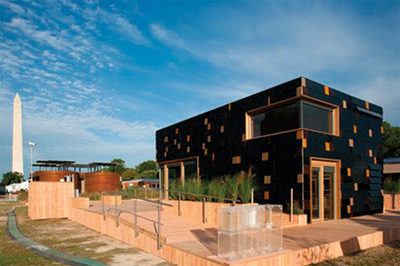
Photo 5. Not only are new homes employing on-site generation, the way has been paved for incorporating these on-site generation systems into the construction of the home. This home was a project built for the solar decathlon held every year to showcase new PV innovation and use.
With the advent of Green Technology, LEED, Energy Star and the push to reduce carbon footprints and emissions and to reverse the ill effects of older technologies, we are experiencing a landslide of new, small scale, DC-power-producing systems and equipment. Power generation equipment currently on the market is not only ready for easy installation and integration into the home, it can harness or burn all types of fuel to produce energy. Everyday appliances, equipment, luminaires, and HVAC equipment are being produced to use DC power directly from the generation source without the need for conversion from AC to DC.
Currently, solar photovoltaic (PV) systems harness the sun’s energy and typically produce DC-type power; however, there are PV modules that will deliver AC-type power as well, right from the module via a micro inverter incorporated into the panel itself. Many of these systems incorporate the PV panels into the roof construction. These systems incorporate proper wiring methods allowing the system wiring to be concealed in the attic via rigid metallic raceways, and the balance of the equipment is located in the garage or in an outbuilding on the property.
This type of home is becoming the norm rather than the exception, particularly in those areas of the country that enjoy 300 plus days a year of sunshine. These homes, for the most part, are capable of self-sufficiency with built-in power plants; making them not only a permanent part of the structure, but the home itself becomes a permanent power production source.
Wind systems that have been around for decades and were once thought only available for commercial power generation are also now available on a smaller scale for homes and businesses, harnessing the wind’s energy as a renewable alternative. These systems are typically a DC-type power source using inverters to convert from AC to DC for use on-site. In those areas where wind is available and is a constant renewable source, it is not uncommon to see whole neighborhoods run by wind power.
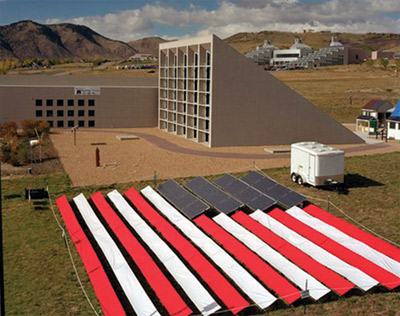
Photo 6. Even Old Glory gets into the act with this modern PV system. Generally the only real way to prevent a solar array from generating power when there is illumination is to cover it when the sun is out; this user makes use of the covers in a patriotic way.
Many neighborhoods in rural areas have power co-ops that use wind exclusively, the systems for which have for years been part of the landscape. The 2011NECprovides guidelines for installation and inspection systems up to 100 kW max in Article 694.
These wind systems are also being incorporated into PV and other systems, along with on-site storage of the generated power, where there is plentiful wind and sunshine, almost guaranteeing the presence of power for the home and allowing many residences to exist off the grid in very remote locales without the fear of ever needing to have utility-provided electricity.
Ground source heating systems have become all the rage in arid climates where the earth’s temperature is used via hydronics (using water or other mediums) to heat and cool homes. All equipment is DC-powered and the energy for many systems is harnessed from the sun via a PV system, or from wind, or from other systems.
One of the major components of the on-site generation opportunities available today is storage of the energy produced. Consumers produce and store their own clean, renewable and plentiful power to supply their own personal needs without the assistance of the power companies. This clean renewable energy is typically DC and is stored in large banks of storage batteries at the generation site for use during periods of non-generation when needed.
Not only have we witnessed the de-regulation of power in many states, we are now seeing a push for the expansion of individual on-site power generation, both AC and DC.
While there was a time when this technology didn’t exist on a smaller scale, and many neighborhoods and communities frowned on it or outright didn’t allow a consumer or homeowner to have these types of products or equipment in a residential neighborhood. Times have changed with the rising costs of energy and that is no longer the case.
DC and the NEC
How about the NEC? Are we covered when it comes to DC installations?Absolutely, not only does theNECcover DC wiring methods and equipment, it covers them in detail. Many articles address DC along with AC and provide for topics like grounding and bonding of these systems in Article 250 Part VIII; these provisions get as specific as needed for grounding and bonding of a DC system.
How about that new light emitting diode (LED) lighting that we see everywhere?Article 410 in the NEC has it covered. The NEC addresses DC in Article 480 for storage batteries. If one were to search, he would find that DC power is not only addressed, but it holds several place markers within theNECand has been covered for well over a century.
Article 610, Cranes and Hoists, provides for DC wiring used with short-time rated crane and hoist motors in Table 610.14(A). And let’s not forget the new technologies — the new car charging requirements for electric vehicles (EVs) are in Article 625.
Is there more you ask? Article 690 gives detailed requirements for the installation of a PV system. And right behind that is the new-for-the-2011NEC,Article 694 for small wind systems up to 100 kW. I think we can see that DC isn’t a new idea.
And these new systems are DC?Yes, these areallDC-generating systems until converted to AC, for the most part. Remember that symbiotic relationship we mentioned at the beginning of this article?
Despite a few rumors of the contrary, DC is more than just alive and well, it is on the move and recapturing more territory in electronics.
In Conclusion
We have visited the halls of history to see where this whole AC/DC discussion started, who the major players were and how they finally came to agree on what was best for a power-hungry nation. We have also looked into and discussed the current on-site generation trend that is sweeping the nation.
With the cost of on-site energy generation systems and equipment dropping at a feverish pace, it makes perfect sense for average homeowners to ensure that they have their own reliable and economical source of electricity.
With homes often becoming the workplace and with many others having occupants who rely on electrically powered medical devices, the need for a constant and reliable source of power is paramount. To sum it all up, theNEConce again has provided for and guides us in all manner of safe electrical installation, whether that installation is AC or DC. So you decide — AC or DC!













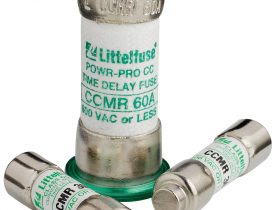
Find Us on Socials